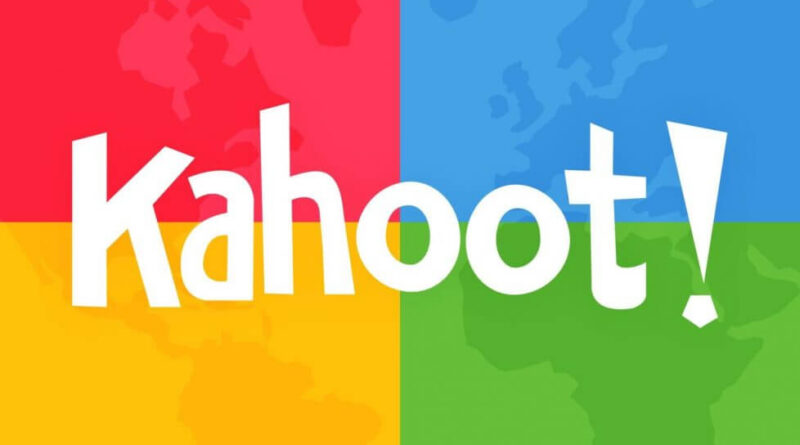Kahoot: A Comprehensive Guide to Interactive Learning
In today’s fast-paced educational landscape, finding innovative ways to engage learners has become crucial. Enter Kahoot, a game-based learning platform that has transformed classrooms and corporate training rooms worldwide. Kahoot makes learning fun, interactive, and effective by blending traditional teaching methods with technology and gamification. Let’s explore how this tool can elevate your learning experience.
What is Kahoot?
Kahoot is an online platform that allows users to create, share, and play interactive quizzes, surveys, and games. Designed with engagement in mind, Kahoot is accessible via desktop or mobile, making it versatile for classrooms, remote learning, and corporate environments. Since its launch in 2013, it has become a favorite for teachers, trainers, and students looking to add an element of fun to learning.
How Kahoot Works
At its core, Kahoot enables users to create “kahoots”—custom quizzes, polls, or challenges tailored to specific topics. Participants can join games by entering a unique PIN on the Kahoot website or app, which fosters a collaborative and competitive environment.
Here’s how you can get started:
- Sign Up: Create a free Kahoot account at kahoot.com.
- Create a Quiz: Choose a template or start from scratch. Add multiple-choice questions, true/false options, or open-ended responses.
- Host a Game: Share the game PIN with participants. Kahoot works well on large screens for live settings or as self-paced challenges for remote users.
- Track Progress: Use Kahoot’s analytics tools to monitor performance and identify knowledge gaps.
Why Use Kahoot?
Kahoot is more than just a quiz tool—it’s an interactive learning experience. Here are some key benefits:
1. Increases Engagement
Kahoot’s game-like format, complete with music and point-based scoring, makes learning feel less like a chore and more like a challenge. It motivates participants to stay focused and actively participate.
2. Encourages Collaboration and Competition
Players can work in teams or compete individually, fostering a sense of camaraderie or healthy rivalry. This setup is particularly effective in both classrooms and team-building activities.
3. Customizable Content
Teachers and trainers can tailor kahoots to fit specific learning objectives, from math problems to corporate compliance training. The ability to integrate images, videos, and diagrams ensures content is visually engaging.
4. Supports Diverse Learning Environments
Whether you’re teaching in a physical classroom, running a remote workshop, or managing a hybrid setup, Kahoot adapts seamlessly. It also supports asynchronous learning with self-paced quizzes.
5. Data-Driven Insights
Kahoot’s reporting tools allow instructors to analyze participant performance, pinpoint strengths and weaknesses, and adjust content accordingly.
Applications of Kahoot
Kahoot isn’t just for schools; its applications are broad and versatile:
- K-12 Education: Teachers use Kahoot for quick assessments, review sessions, or even to introduce new topics.
- Higher Education: Professors can engage large lecture halls with quizzes and spark discussions.
- Corporate Training: Businesses utilize Kahoot to onboard employees, reinforce company policies, and conduct training sessions.
- Social Events: Kahoot can be a hit at family gatherings, trivia nights, or virtual meetups.
Tips for Maximizing Kahoot’s Potential
- Mix Up Question Types: Use a blend of multiple-choice, polls, and open-ended questions to maintain interest.
- Incorporate Media: Add videos, images, or diagrams to make questions more dynamic.
- Time It Right: Adjust time limits based on question complexity to balance speed and comprehension.
- Leverage Team Mode: Encourage teamwork by enabling Team Mode for group learning activities.
- Use Templates: Save time by customizing Kahoot’s pre-designed templates.
Challenges to Consider
While Kahoot is a powerful tool, it’s not without limitations:
- Tech Dependency: Reliable internet and devices are required for optimal use.
- Over-Competitiveness: Some participants may feel pressured by the competitive aspect, so it’s essential to balance fun with learning.
- Shallow Learning Risks: Ensure questions encourage critical thinking rather than just quick recall.
Future of Kahoot
Kahoot continues to innovate by introducing features like integrations with Microsoft Teams, self-paced “Kahoot Challenges,” and AI-driven question generation. As hybrid learning becomes the norm, Kahoot’s flexibility and adaptability will make it an essential tool for educators and organizations alike.
Conclusion
Kahoot has revolutionized the way we think about learning by combining technology, gamification, and interactivity. Whether you’re a teacher trying to captivate students, a trainer aiming to motivate employees, or simply a trivia enthusiast, Kahoot offers endless possibilities. By making learning fun and engaging, Kahoot ensures that knowledge sticks, one question at a time.
FAQs About Kahoot
1. What is Kahoot?
Kahoot is a game-based learning platform that allows users to create and play interactive quizzes, polls, surveys, and games. It is widely used in schools, universities, and workplaces to make learning and training sessions fun and engaging.
2. Is Kahoot free to use?
Yes, Kahoot offers a free version that includes basic features like creating and hosting quizzes. However, there are paid plans with additional features, such as advanced reporting, customizable branding, and collaboration tools.
3. Who can use Kahoot?
Kahoot is designed for all types of users, including:
- Teachers and students (K-12 and higher education)
- Corporate trainers and employees
- Event organizers for trivia and social games
- Parents and families for home-based learning or fun activities
4. How do I create a Kahoot?
To create a Kahoot:
- Sign in to your Kahoot account at kahoot.com.
- Click the Create button and choose a quiz, poll, or survey template.
- Add your questions, answers, and media (images or videos).
- Save and share your Kahoot with a unique game PIN.
5. How do participants join a Kahoot game?
Players can join a Kahoot game using:
- The Kahoot app (available on iOS and Android) or by visiting kahoot.it.
- Enter the unique game PIN shared by the host.
- Enter their name or nickname and join the game.
Also Read: Unlocking Creativity: Exploring Lovelolablog Codes
6. Can Kahoot be played remotely?
Yes! Kahoot supports both in-person and remote learning:
- Live Mode: Host a live quiz over video conferencing tools like Zoom, Microsoft Teams, or Google Meet.
- Self-Paced Mode: Create challenges that participants complete at their own pace.
7. What types of questions can I add to a Kahoot?
Kahoot supports various question types to enhance interactivity, including:
- Multiple-choice
- True/False
- Polls
- Puzzles (rearrange answers in the correct order)
- Open-ended responses
- Word clouds (available on premium plans)
8. Is Kahoot suitable for corporate training?
Absolutely! Kahoot is widely used for:
- Employee onboarding
- Team-building exercises
- Compliance and safety training
- Product knowledge assessments Corporate plans include advanced features like branding, collaboration, and analytics.
9. Can I customize my Kahoot?
Yes, you can:
- Add images, videos, or GIFs to questions.
- Use pre-made templates to save time.
- Customize colors and themes (available with premium plans).
10. How many players can join a Kahoot game?
- Free Accounts: Up to 10 players per game.
- Paid Plans: Player limits range from 20 to thousands, depending on the plan.
11. Can I use Kahoot without an internet connection?
Kahoot requires an internet connection to host or play live games. However, self-paced challenges can be accessed offline on the Kahoot app once downloaded.
12. Can I share my Kahoots with others?
Yes! You can share your Kahoots by:
- Sending the unique game PIN.
- Sharing a direct link.
- Collaborating with team members if you have a team plan.
13. Are there any parental controls on Kahoot?
Kahoot is family-friendly, and its “Kahoot! Kids” mode offers curated content suitable for younger children. Parents can monitor and manage their child’s activity through the app.
14. How secure is Kahoot?
Kahoot adheres to strict security and privacy protocols, ensuring user data is safe. It complies with global standards like GDPR and FERPA.
15. Can I integrate Kahoot with other platforms?
Yes, Kahoot integrates with tools like:
- Microsoft Teams
- Google Classroom
- Zoom
- Slack This makes it easy to host games and manage learning directly from these platforms.
16. What is Kahoot Premium, and is it worth it?
Kahoot Premium is a paid subscription that offers extra features like:
- Advanced reporting and analytics
- Custom branding
- More question types (e.g., word clouds, puzzles)
- Team collaboration tools If you need these advanced features for education or corporate training, the premium plans are worth exploring.
17. Can I use Kahoot in languages other than English?
Yes, Kahoot supports multiple languages, making it accessible for global audiences. You can create quizzes in any language.
18. How do I track player performance?
Kahoot offers detailed reports on game results, showing player scores, answer accuracy, and participation. These reports are available in both free and paid plans, with advanced analytics offered in premium plans.
19. Can Kahoot be used for social or family events?
Definitely! Kahoot is popular for trivia nights, birthday parties, and family gatherings. You can create fun, customized games to entertain everyone.
20. Where can I find pre-made Kahoots?
Kahoot offers a vast library of public games created by other users. Simply search for a topic in the Discover tab, and you’ll find ready-to-use games for various subjects and themes.


